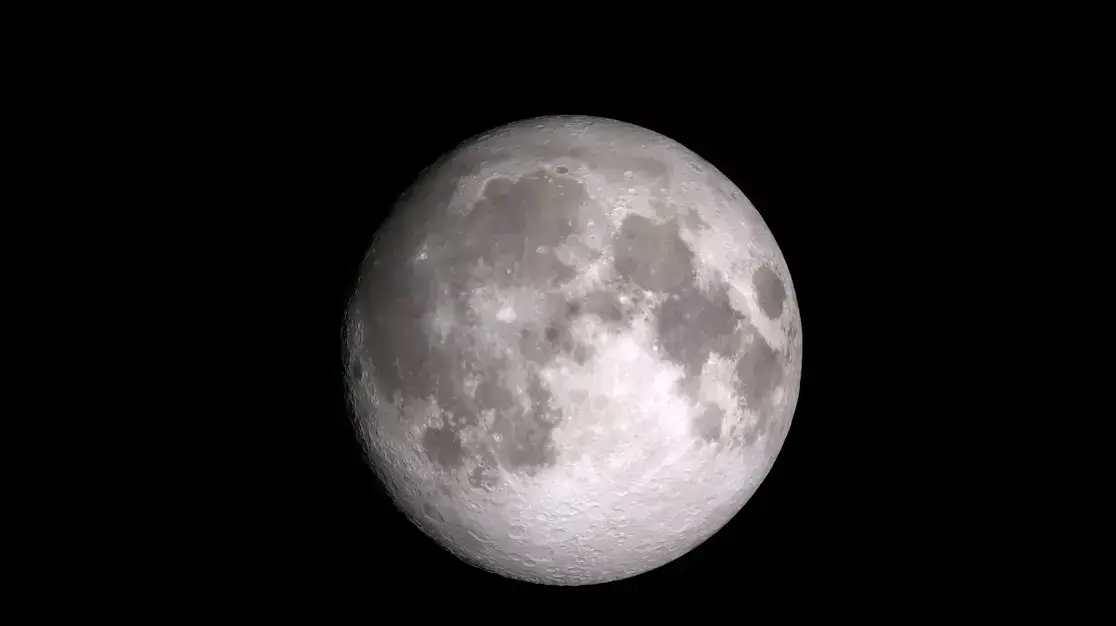Moon as photographed by Orion spacecraft (NASA)
The moon has fascinated humans for thousands of years, with its transformations and enigmatic dark side. Although this is the only heavenly body upon which man has stepped through, we still have much to learn to understand its potential and discover its secrets.
However, one hidden feature of the moon has recently been revealed by scientists and it is very, very large and very, very heavy. The study of the Moon contributed to the creation of several important measuring instruments, such as seismographs (instruments for measuring the oscillations of the planet's crust). Thanks to these, scientists have discovered earthquakes on the moon—and these quakes have revealed a lot about what's inside. Over the past two decades, it has become clear that the moon has a liquid core, but new models show that there is more to it. Inside that outer core we will find that there is a solid inner core, just like that of our planet.
The research team tested models that could reconstruct the physical properties of the Moon from its mass, how it rotates, and how tides distort it. These models provided them with indications that there must be a solid inner nucleus there. The scientific website iflscience reported that the team estimates that this inner core is about 500 kilometers in diameter. In addition, it has a density lower than that of the Earth.
This is what the interior of our moon looks like (Photo: documentation on social networks according to Section 27A of the Copyright Law, Géoazur/Nicolas Sarter)
This is not the only intriguing insight they provided: in the landscape they deciphered the phenomenon called the reversal of the lunar envelope. Simply put, it's an idea that material from the mantle, the thick middle layer between the thin crust and the outer core, moves quite a bit.
Some elements, including iron-rich material, may rise from the core-mantle boundary all the way to the surface, exiting through volcanic rocks that now make up the lunar crust. At the same time, parts of the crust that were denser than others sank through the mantle to the moon's core.
Other things you didn't know about the moon:
The last person to visit the moon reported "bright flashes" and warned against going back there
Earth has another "moon" - at least for another 300 years
Scientists confirm what the interior of the moon looks like
Understanding the internal characteristics of the moon today gives us insights into the past. Scientists believe the Moon once had an extremely strong magnetic field - 100 times that of Earth produced by the core. The magnetic field is almost non-existent now. The ability to understand what the moon looks like from the inside may explain why this happened and what else could have happened billions of years ago.
"Our results question the evolution of the Moon's magnetic field by demonstrating the existence of the inner core and support a global mantle reversal scenario that brings significant insights into the timeline of the late heavy bombardment in the first billion years of the solar system," the authors wrote in the study published in the journal Nature.
More about the Moon
NASA official: "People will live on the moon by 2030 - and Mars next"
See full article >
Scientists have discovered a huge 'structure' beneath the moon's surface
Topography of the Moon. The location of the anomaly is marked in a circle (Photo: NASA/Goddard Space Flight Center/University of Arizona)
But that's not all - it turns out that on the moon, on its far side beneath the crater "South Pole Aitken Basin" - one of the largest preserved craters in the solar system - is a structure weighing at least 2.18 billion kilograms and measuring more than 300 kilometers in depth and 2,000 kilometers in length.
The researchers who made the discovery claimed that this "anomaly" could be made of metal from an asteroid core or oxides formed by the crystallization of a magma ocean. "One explanation for this additional mass is that the metal from the asteroid that formed this crater is still embedded in the lunar mantle," lead author Peter B. James, of Baylor University in Houston, said in a statement with IFLScience.
To illustrate how huge this "structure" is, he said: "Imagine taking a pile of metal 5 times larger than the Big Island of Hawaii and burying it underground. That's about how much unexpected mass we've discovered."
- technology
Tags
- moon
- research
- moon

